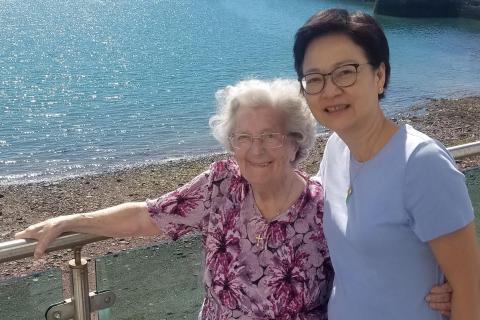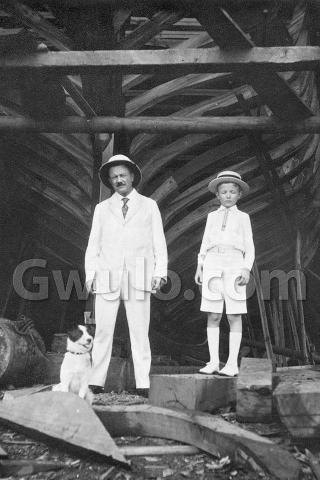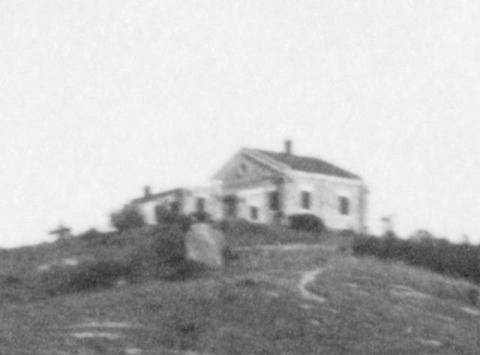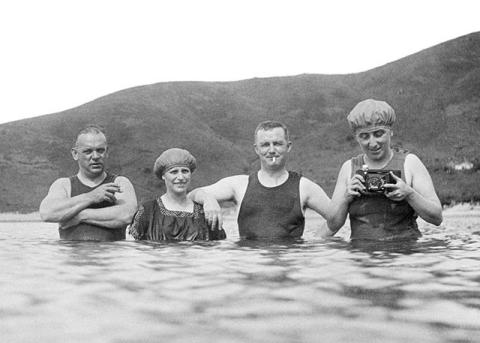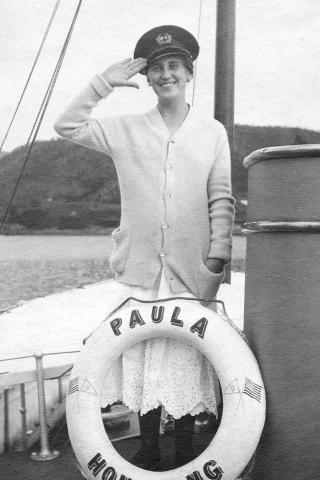This week's newsletter is an extract from the new Volume 3 of the Gwulo books. It includes a lovely story from Barbara Anslow, but I'm very sorry to have to pass on the sad news that Barbara passed away earlier this week, peacefully at home.
|
In memory of Barbara Anslow (née Redwood) [1918-2019] Regular readers know Barbara as a frequent and generous contributor to Gwulo. Using extracts from her diaries and letters, combined with her clear memories, she told us about life in Hong Kong as a child in the 1920s, and as a young woman during the long wartime internment at Stanley Camp. She helped countless people learn more about their own family's experiences in Stanley, often knowing the person, and able to share a story or two about them. Heading into her nineties, Barbara just packed more and more into life, with visits to Buckingham Palace, giving the reading at a national event, interviews, talks, and closing off the decade with the publication of her book about her wartime experiences, Tin Hats and Rice. Here she is in July of this year - aged 100, but you'd never guess it.
Though her mind was as sharp as ever, she told us she wasn't feeling great. Our regular e-mail exchanges slowed down, then stopped last month - her last message ending simply 'am still weary'. So Barbara, take your rest, you deserve it. Your generous and modest nature will continue to inspire, and you leave a wonderful legacy with your book. Love, David PS If any readers would like to make a contribution in memory of Barbara, her daughter Maureen asks for donations to the the St Helena Hospice based in Colchester. She says that 'the help we received from them during Mum's final weeks was immeasurable', and hopes that their service can be extended to more families in need. |
Photo (19): Ah-King’s 'Paula'
Just like the Corinthians’ club, Ah-King’s slipway survived the 1906 typhoon, but couldn’t fight the 1920s reclamation. It stayed in business, though, relocating to the typhoon shelter at Causeway Bay. When that was reclaimed in the 1950s, the slipway moved for the third and final time, just far enough north to get access to the sea again.
Back in 1919, Ah-King pops up in the story of Ming Yuen Gardens, and their first dragon boat races. The Gardens announced that ‘… the judge will be Ah King. Whilst Mr Mok Lin, of Ah King’s slipway, will act as starter.’ Ah-King’s presence was clearly meant to inspire confidence, and shows he was also well-known in the Chinese boating community.
But western-style boats, like this launch under construction, were his main business. I can’t be 100% sure the photo above was taken at Ah-King’s, but the photo below makes it very likely. It shows the same boat, out of the water on Ah-King’s slipway (the gates on the right show ‘A. King’). That building at top right is the Royal Naval Hospital, which shows this photo was taken when Ah-King was still in Wanchai.
The finished launch, the Paula, looked very smart.
The owners made good use of it, as their photos show them visiting many of the bays and beaches around Hong Kong. In the photo above they’re likely off Cheung Chau. That house on the hilltop has the simple style that was typical of the missionaries’ houses there.
The highlight of their outings was the chance to cool off in the sea.
These photos of Paula and her passengers were taken in the late 1910s and early 1920s, before air-conditioning made Hong Kong’s summers bearable. When a dip in the sea was the only way to cool off, it’s not surprising that people took many more launch trips than we do today. Barbara Anslow was in Hong Kong as a young girl, just a few years after these photos were taken. She describes very similar outings:
"Every Tuesday and Thursday after office and school hours, a small launch took us the ten minute trip to Stonecutters Island in the harbour and anchored near the beach. Every weekend, there was an afternoon trip on a larger launch, the OC409, to one of the further beaches – Big Wave Bay, Island Bay, Deep Water Bay, Silvermine Bay, or Cheung Chau.
"We boarded the OC409 in the Naval Dockyard when it eased alongside some steps. Ladies occupied round wicker chairs in the bow, men at the stern; teenagers and flappers in between, some lounging on the less hot areas of the engine casing playing their banjos and singing ‘Ain't She Sweet’ and ‘Bye Bye Blackbird’. Children belonged nowhere in particular and ranged about everywhere.
"From April to October each year the OC409 became our Mecca. We all – adults and children – wore topees during the summer season, mostly white ones with green lining. On one trip, my sister Mabel’s topee blew off her head into the sea; the launch turned about, chasing the floating topee until one of the crew was able to rescue it with his boat hook: of course our OC409 would not sail on and abandon a little girl’s hat!"
This extract comes from the book, Old Hong Kong Photos and The Tales They Tell, Volume 3. I don't have a firm publication date yet, but I'm crossing my fingers it'll be out in December.
